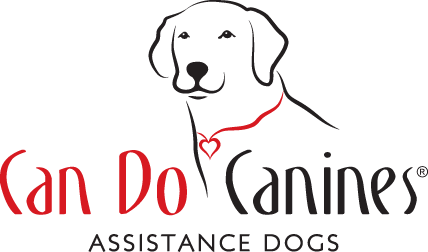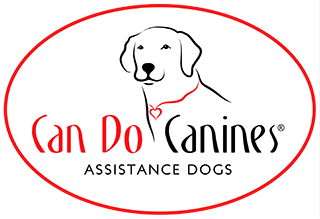Teaching a dog to walk nicely with us on a leash is one of the hardest skills you will ever have to maintain. We walk much slower than our dogs, tend to walk in a straight line, and certainly don’t get excited about running over to sniff delicious smells. While most dogs will get very excited about the opportunity to go for a walk, the manner in which we want them to walk with us is not naturally reinforcing for the dog. It will take a lot of training and consistency to get the picture you want.
Consistency & Management
The biggest reason dogs pull on leash is because pulling works for them, at least some of the time. Every time the dog gets excited and walks faster than we would like them to in order to get somewhere, they are getting rewarded for that action. Sometimes the dog will only get a few feet before their handler realizes what’s happening and stops. But in the dog’s mind, pulling got them closer.
To us it can be mind boggling while a dog would choose to keep pulling even when they are choking and coughing. Why don’t they learn that it hurts?! But to the dog, the possibility of getting to greet that person, dog, or sniff that smell is so exciting that they can block out everything else. They seem to at least act like they forgot we were there.
In order to help our dogs learn what we want them to do, we need to set up situations where we can consistently reinforce the loose-leash behavior that we want, AND to remove as much reinforcement as possible from the dog’s attempts at pulling. Remember, pulling forward takes two participants!
Management
If we can’t consistently react to the dog’s attempts at pulling, then we need to try to manage it to prevent it from occurring. Management doesn’t actively teach the dog what we want them to do, but hopefully it sets up the dog so that they physically aren’t pulling on the leash.
Ideas for managing a tough situation might include:
- Determining if you are using the correct equipment as instructed by your CSC.
- Going off to the side to work on focus while standing still. You may need to grab the dog’s collar or step on their leash if they are really struggling. Generally, if the dog can’t focus while you are standing still, then walking is going to be very difficult. Wait until the dog calms down before trying to walk around the store, or deciding that the dog needs a mental break and leaving the area.
- Cookie magnet the dog away from the distractions or to the area you’re trying to travel to. This involves taking a handful of cookies and putting them directly to the dog’s nose. Lure them forward, actually giving them the cookie however frequently you need to in order to keep your dog thinking about your cookie hand over the environment
- Use a gentle leader or halti head collar to give yourself more control. For some dogs, putting on the head collars will also prevent them from pulling. However, most dogs can still pull while wearing one. Usually you will need to combine this with a cookie magnet if the dog is in over their head.
Reinforcement
When working on a dog’s walking skills, it’s always best to start in an easy environment. This might be inside your house, and graduating to a driveway or empty parking lot if life is very distracting.
Make sure that when you feed the dog, you pass the reward to whatever side the dog is on. If your dog is on your left side, you need to pass the cookie to your left hand and feed directly at the side of your body, at your pants seam or a little behind. Feeding at your side will encourage the dog to stay further back instead of trying to wrap around in front of you to get closer to where the cookies are held. Don’t worry about trying to go in a straight line. It’s okay if you’re just in your driveway or going back and forth between a few houses. This step is easiest to practice in a large open area like a big field or empty parking lot.
A crucial part of loose-leash walking is not just maintaining pace with you as you walk, but actually stopping when you stop. Frequently practice taking just a single step and stopping to reward your dog before they surge past. You want to condition your dog to focus on what your body is actually doing. Give lots of treats for noticing when you stop moving.
If your dog pulls, you will respond in a way described in the next section. And then you will try to reinforce your dog once they are back with you. At first, you will want to reward your dog for coming back to walk nicely, before they have a chance to pull again. But since this can accidentally create a chain of pulling and then running back to get a cookie, we want to change how we are rewarding as the dog gains more experience. With an experienced dog, if you have to respond to pulling then wait until you walk forward a few steps before giving the next cookie. This reinforces them for walking at your side versus just coming back to you.
Since walking and always trying to respond to what the dog is doing can be exhausting, make sure you’re setting yourself up for success. Practice walking in easy environments such as inside your house and in your driveway before you decide to take a walk through a busy park.
One thing that can help is to focus on duration over distance. It may take you an hour to go around the block if you’re really working hard at loose leash walking skills. Instead, set a duration goal of walking and at the halfway point, or slightly before, turn back around regardless of how far you got. The dog is still practicing their walking skills and they still got out of the house.
Responding to Pulling
Ultimately, the reinforcer for keeping the leash loose is continuing to walk forward. But if the dog is getting this same reward even when they pull on the leash, this makes practicing loose-leash walking very difficult and dependent on how many extra reinforcers they are getting such as treats. This is one of the reasons why dogs are usually a lot better at walking when in “public” than they are at going on a neighborhood walk. Stores are a huge contextual cue that you’re going to be giving a lot more treats for focus versus a neighborhood walk where they quickly learn you're a bit stingy.
Whenever the dog pulls, the most important consequence is that it does not take them closer to where they want to get to, even a few feet. For this to be effective, it has to happen every single time the dog pulls or they are accidentally getting on a random reward schedule; like a little gambler always hoping the next lunge will work.
Here are a few ideas to try for pulling:
- Penalty yards: Backing up until the dog gets close to your side (usually 3-5 steps back), then immediately going forward again without pausing.
- 180’s: Turning around and going the opposite direction. This is best done when you don’t have a “goal” location to walk towards but are practicing on a neighborhood walk or an empty lot.
- Big circle: The circle is similar to the 180 in that you change direction. But instead of doing a 180, you make a large circle with the dog on the outside. Think of lunging a horse. Go forward once you're facing the direction you wanted to go again, or circle again until your dog starts to calm down. This works the best for dogs who have a ton of energy or for dogs who seem distracted by everything in all directions!
- Stop and be a tree: Stop and wait for your dog to come back to your side before moving forward. This works best for advanced dogs who will notice you stopping and instantly try to fix themselves.
You don’t have to stick to a single method. Try out a few and see what works for your dog in different situations. Every dog is different.
With all methods, try hard to respond before the leash is tight. You should be able to see that the dog is getting too far ahead and is close to pulling. It’s at that moment that you want to talk to your dog and stop your forward motion, applying one of the techniques above. While at first the dog may not notice your change of direction/stopping, the eventual goal is that the dog starts to respond to what your body is doing and does not rely on hitting the end of the leash in order to come back to you.
Sniffing
Dogs love to sniff! It’s how they explore the world and decompress.
But when out in public with a dog, our goal is to teach the dog to focus on us. It’s not the time for browsing the latest animal headlines. Sniffing during a walk can become dangerous for you if they try to pull to get to their favorite sniffing spots, or if they are so into sniffing the world that they miss the signs to alert you to a medical condition. Most of your corrections for a dog who is sniffing is going to be for pulling. Regardless of whether their head is on the ground or not, if the leash is becoming tight then you need to stop moving in the direction the dog wants to go and apply one of the corrections discussed above.
If a dog is sniffing and isn’t actually pulling, you can try to redirect them by calling their name or giving a cue to “nudge” your hand. You may need to initially body block the dog by getting between them and the special spot in order to grab their focus.
If the dog is wearing a head halter, you can gently pull up on the leash to bring their nose off the ground and keep tension until the dog relaxes their head. You may need to repeat the leash tension several times to communicate to the dog that you are going to be consistent.
A sniff break in a park can be a great way to let your dog have fun running around and sniffing without having to worry as much about pulling. Plant your feet or walk in the other direction to redirect the dog. Practice recalls frequently to make sure the dog can switch back into handler focus. Gently grab their collar if you are able as you feed the dog their cookie in order to get the dog used to that reach towards them, and then release them back to play.
Rubbing their Equipment
Many dogs in the program will wear a head collar such as a Gentle Leader or Halti.
If a dog is trying to rub their nose on you or on the ground, this can be a safety hazard to our clients. It is also highly self reinforcing if you do nothing, so you need to correct it every single time.
If the dog is rubbing on the ground, use the same techniques as described above for sniffing. Gently pull up on the leash to lift the dog’s nose off the ground and keep that tension until the dog relaxes. You likely will need to repeat this several times to communicate that rubbing is not an option.
If the dog is rubbing on your leg, you can use the same leash tension but pulling away from your leg. Or you could try taking a step into the dog’s space, to have the dog back up and remove their nose from your leg. Don’t back up yourself, as that often results in the dog continuing to come forward and rub.
If the dog is rubbing often and your consistent reaction isn’t helping, talk to staff about switching the dog’s equipment. Sometimes simply switching to a brand with a different fit can make a big difference!
Muling
Occasionally dogs will hit the breaks and refuse to move forward in the direction you want to move. The first thing to rule out is anxiety.
If you know your dog does not have a physical reason or isn’t worried, then we want to make sure that your response isn’t accidently reinforcing the muling. Make sure you are not showing the dog a treat to get them to move, or even reaching into your pocket before the dog starts to move towards you. Smart dogs can easily learn to put on the breaks in order to get a cookie.
Instead, try to encourage your dog in other ways like cuing a hand nudge, or move away from your dog, playfully tagging your dog as you do. If your dog still doesn’t move, keep very light tension forward on the leash and wait. You can practice this leash tension technique in your house to get your dog used to moving into tension.
As soon as the dog starts to take a step towards you, THEN you can praise and reach to grab a cookie. Gradually increase criteria until the dog gets all the way to you and starts walking with you before getting out a cookie. Remember to give your dog verbal feedback while walking.




